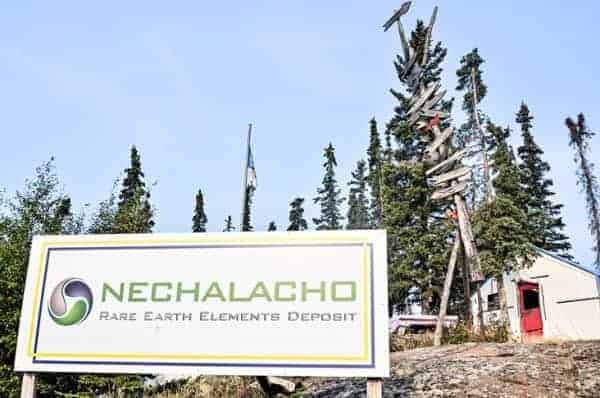Avalon Advanced Materials announced last week it was reconsidering the viability of the Nechalacho rare earths project that it had shelved in 2014.
Nechalacho is located 100 kilometres southeast of Yellowknife, on Thor Lake.

Changes in the market for rare earths, as well as the GNWT’s recent 2030 Energy Strategy, are playing key roles in this project’s fledgling revival.
“What is changing now (is) the demand for certain rare earths and certain rare metals most closely associated with the green economy – so electric vehicles, turbines – is increasing significantly,” says David Connelly, of Ile Royale Enterprises Ltd., a strategic adviser to Avalon Advanced Materials.
According to Avalon’s press release, “The world still largely relies on China for rare earth supply, yet China has reportedly become an importer of neodymium concentrates.”
The other potential game-changer that might make Nechalacho viable is the GNWT’s aspiration to put in power infrastructure to connect the North Slave and South Slave grids and expand the Taltson hydro dam. One of the proposed routes in doing this would run power lines right by Thor Lake.
The report also stated a long-term goal of connecting the NWT’s grid to the rest of Canada, which would create economies of scale for producing power in the NWT, and also give the territory access to cheap southern power.
Connelly says this could bring costs per kiloWatt hour down significantly. Right now, he says, hydro power in Manitoba and Saskatchewan runs six to eight cents per kWh, compared to close to close to 34 cents per kWh for diesel power.
As well, the new iteration of the project is scaled down from before. The meat of the version of Nechalacho shelved in 2014 was an underground mining project, with a few surface metals as garnish.
The new Nechalacho is focused on those garnishes first and foremost, because they are what’s in demand for electric vehicles, and then the project has the potential to scale back up to its original scope after that.
Right now, Nechalacho is still just an idea. The old project had a feasibility study and approved environmental assessment in place.
Connelly says Avalon is looking into whether, or to what degree, those still apply.
“You’ve caught us very early on this,” says Connelly. “There's been no decision to go ahead and the engineering is just being done. Conceptually, this is a similar project (to the original), starting small and expanding to be the same or a very similar project.
“How the permitting world will see that, we don't know yet. In other words, can it all be done within existing permits or will we need to take additional steps? We don't know.”
The reaction to the project’s revival is mixed in Lutsel K’e, says Ray Griffith, manager of wildlife, lands and environment for the Lutsel K’e Dene First Nation.
“(There are) those people in my community who are very afraid of the rare earth minerals that have potential of producing very serious pollution,” says Griffith.
“There are also those in the community who are pleased with the announcement because there are community members who have been working there in the past and would like to be employed again,” said Griffith, adding that when mines open up in the area, a community does tend to benefit economically.